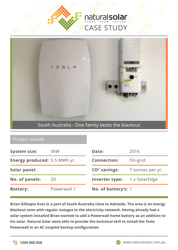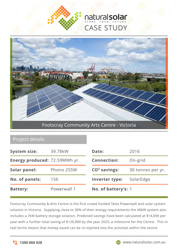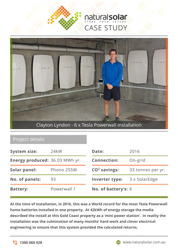So, you’ve made the decision to embrace solar energy in your home – congratulations!
But now you need to figure our which solar system and battery you should choose to suit your household’s needs. It might seem a bit daunting, but don’t feel stressed.
It’s actually quite simple to work out, and we’re going to walk you through the process…
First, you need to take a look at your most recent electricity bill. On there you will find a kilowatt hour (KWh) figure that represents your average daily electricity consumption for that billing period. It might be worth looking at your last few bills to check that this is consistent throughout the year.
Once you have an idea of approximately how much energy in total your household uses in a 24-hour period, you need to figure out roughly how much of this energy is used during the day (when there is sunlight) and how much is used at night.
This might take a bit of guesswork, but try to come up with a general break down of your usage, such as 50% during the day and 50% at night, or 30% during the day and 70% at night. Think about when the members of your household are usually at home and what they are usually doing at that time (i.e. when are you most likely to be using appliances like TVs and the clothes dryer and air-conditioners?).
Essentially, you want your solar panels to be capable of generating enough energy to cover your total usage (day plus night), and you want your solar battery to be capable of holding enough energy to provide what you will need on an average night.
For example, if you have a daily 24-hour average energy usage of 20KWh, and you think your usage might be roughly 65% by day and 35% by night, then you will want a system that produces 20KWh per day and has the ability to store about 7KWh (which is basically equivalent to a single Tesla Powerwall).
Another thing you might like to consider when it comes to the size of your system is possibly oversizing the panels for your inverter. In a lot of cases, as long as you’re operating inside the specifications of the inverter input, then this can be beneficial because the solar panels aren’t necessarily going to produce their rated output at all times.
For instance if you have a 20KWh solar array connected to an inverter that can output 20KWh, on most days that solar array might be producing 19KWh, so if you want to receive the full power output that your inverter can deliver as an AC power, then it might be worth having a few extra panels for those days when it might be a little cloudy.
Need a bit more guidance? The Natural Solar team are always happy to help you figure our which solar system and battery is right for you! Give us a call any time on 1300 060 928 and we would be thrilled to crunch the numbers with you to work out the perfect solar solution for your home.Get your solar quote now!


















